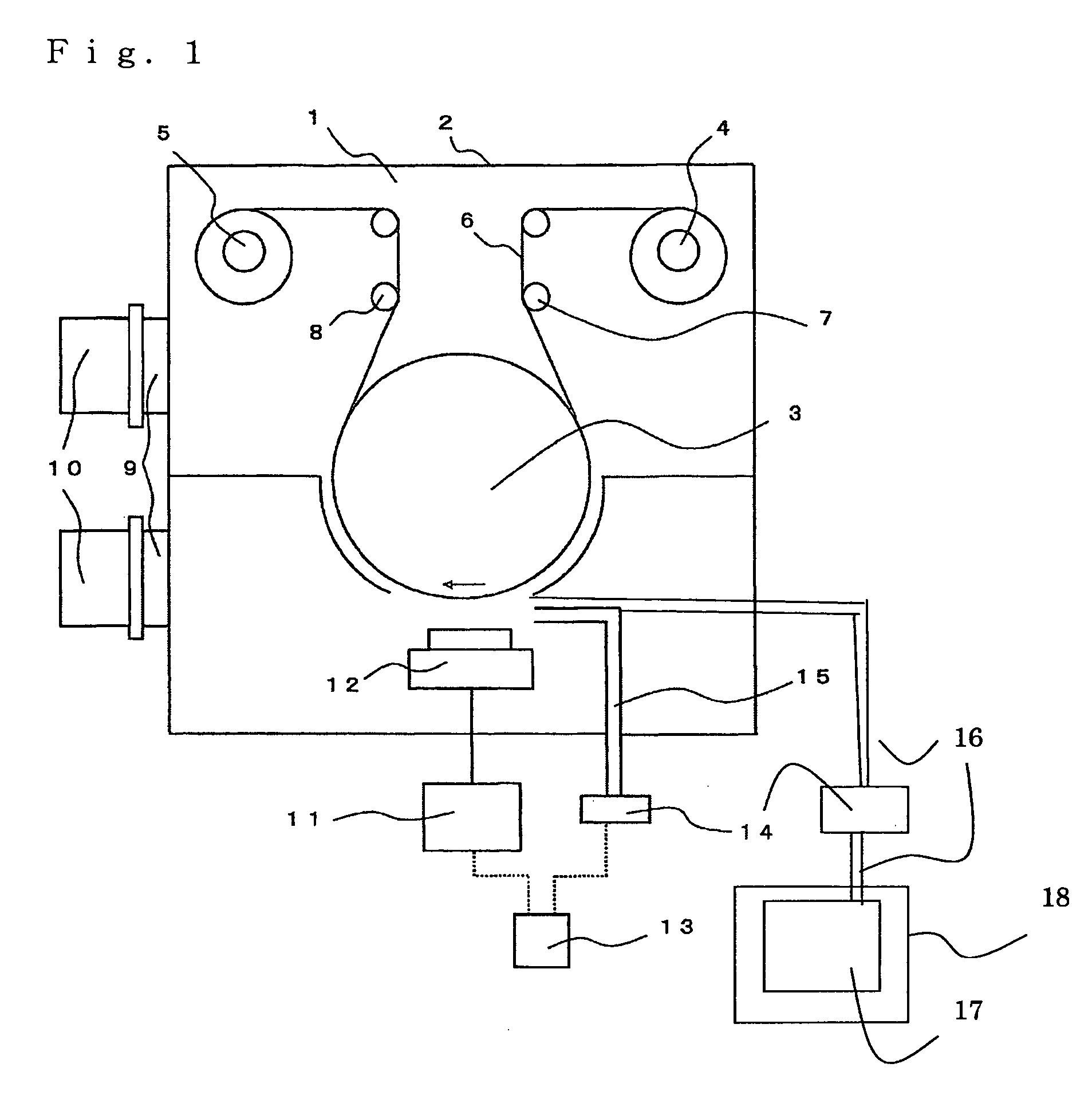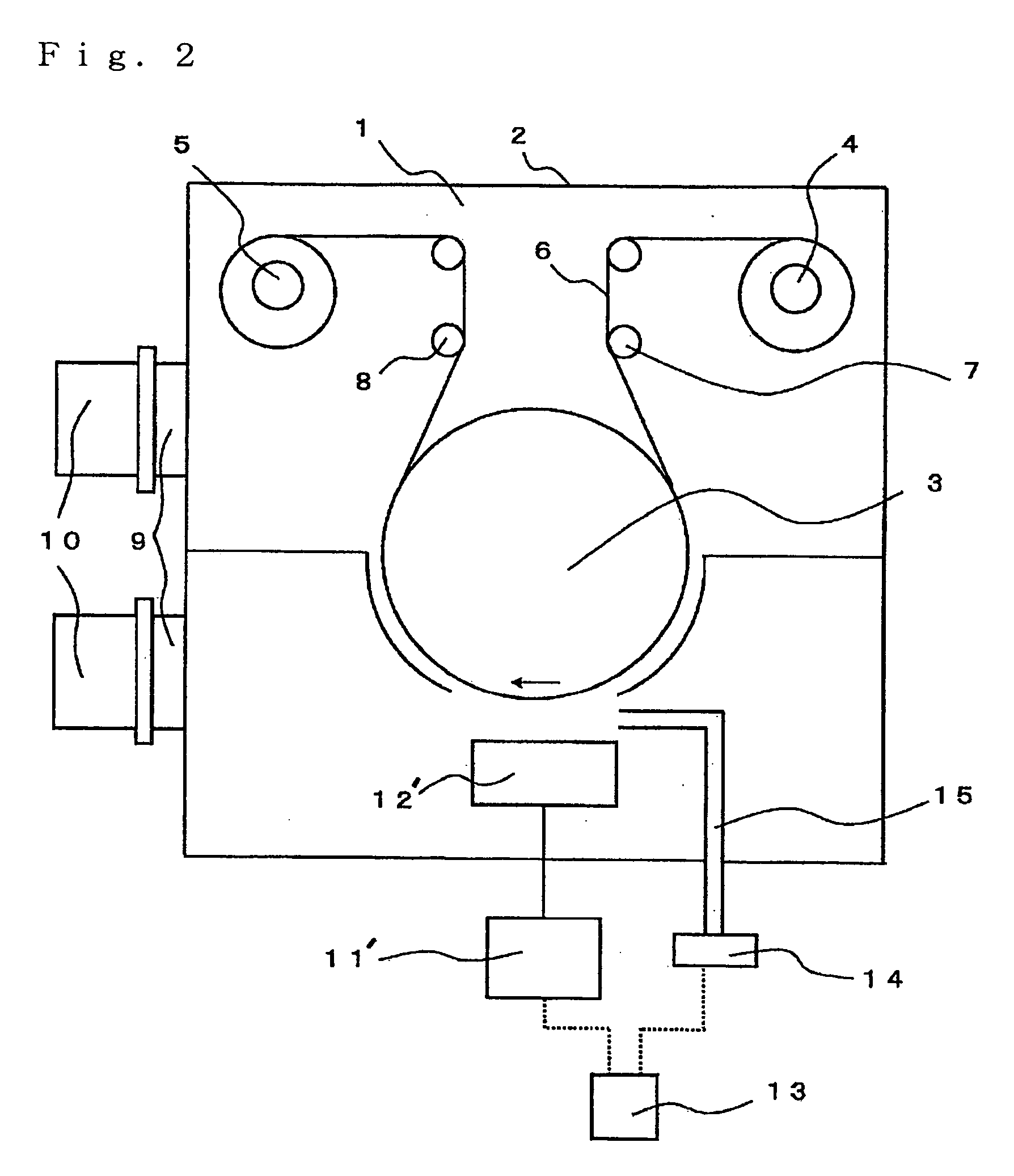Gas barrier film, substrate film, and organic electroluminescence device
a technology of gas barrier film and substrate, applied in the direction of sustainable manufacturing/processing, final product manufacturing, transportation and packaging, etc., can solve the problems of poor gas barrier property of film substrate such as transparent plastics, difficult to increase the area, and difficult to form films, etc., to achieve the effect of high viscosity, difficult film formation, and sometimes deteriorated dynamic characteristics
- Summary
- Abstract
- Description
- Claims
- Application Information
AI Technical Summary
Benefits of technology
Problems solved by technology
Method used
Image
Examples
example 1
[0157] Gas barrier films each formed by disposing a gas barrier laminate on a substrate film and a transparent conductive layer thereon (Specimen Nos. 1 to 21) were prepared in accordance with the following procedures. Details for the structure of each of the gas barrier films are as described in Table 1 and Table 2.
Preparation of Gas Barrier Films of the Invention (Specimens Nos. 1 to 17)
(1) Preparation of Substrate Film
[0158] Substrate films of 100 μm thickness comprising resins described in Table 1 were provided. In Table 1, Lumilar T60 manufactured by Toray Co. was used as PET, and Teonex Q65AF manufactured by Teijin Dupont Film Co. was used as PEN. Further, the substrate films used for Specimens Nos. 8 to 14 were prepared from the resins as the starting materials by the following method.
[0159] The resin was dissolved in a dichloromethane solution such that the concentration was 15 mass % and the solution was cast by a die coating method over a stainless steel band. Then, t...
example 2
Manufacture of Organic EL Device (I)
[0176] An anode of an indium tin oxide (ITO, indium / tin=95 / 5 molar ratio) was formed on a gas barrier film of 25 mm×25 mm (Specimens Nos. 1 to 21) using a DC power source by a sputtering method (0.2 μm thickness), copper phthalocyanine (CuPc) was formed as a hole injecting layer to 10 nm on the anode by a vacuum vapor deposition method, on which N,N′-dinaphthyl-N,N′-diphenyl benzidine was formed as the hole transporting layer to 40 nm by a vacuum deposition method. 4,4′-N,N′-dicarbazole biphenyl as the host material, bis[(4,6-difluorophenyl)-pyridinate-N, C2′] (picolinate) iridium complex (Firpic) as the blue color emitting material, tris(2-phenylpyridine) iridium complex (Ir(ppy)3) as the green color emitting material, and bis(2-phenylquinoline) acetyl acetonate iridium as the red light emitting material were co-vapor deposited over them at a weight ratio of 100 / 2 / 4 / 2 respectively, to obtain a light emitting layer of 40 nm. Further, 2,2′,2″-(1,...
PUM
| Property | Measurement | Unit |
|---|---|---|
| glass transition temperature | aaaaa | aaaaa |
| refractive index | aaaaa | aaaaa |
| refractive index | aaaaa | aaaaa |
Abstract
Description
Claims
Application Information
 Login to View More
Login to View More - Generate Ideas
- Intellectual Property
- Life Sciences
- Materials
- Tech Scout
- Unparalleled Data Quality
- Higher Quality Content
- 60% Fewer Hallucinations
Browse by: Latest US Patents, China's latest patents, Technical Efficacy Thesaurus, Application Domain, Technology Topic, Popular Technical Reports.
© 2025 PatSnap. All rights reserved.Legal|Privacy policy|Modern Slavery Act Transparency Statement|Sitemap|About US| Contact US: help@patsnap.com



